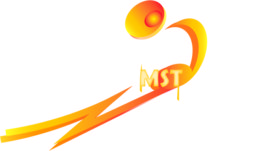In my last post (HERE), I gave a pretty thorough review of my current and future reading for the summer. Well, true to my over-exuberant self, I have actually finished up all the books / CDs I had mentioned… I just can’t seem to put a book down once I start it!
Today, I wanted to give an update on “mindgym – achieve more by thinking differently” by Sebastian Bailey, Ph.D., and Octavius Black. You may recall I had just dipped my toes into this book at the time of my last post.

Reflecting back now that I have completed the book, I am glad I read it. This is not a sport psychology book per-se. It is broken down into seven sections having broad applicability to pretty much all facets of life and includes very practical advice and exercises with which to practice making significant life improvements. The seven sections are:
- Reset Your Mind
- Take Control
- Deepen Connections
- Persuade Others
- Resolve Conflict
- Let the Creative Juices Flow
- Minimize Stress, Maximize Bliss
Although the first six sections contained a wealth of good information, I found that section 7, about stress, was worth the “price of admission” – and directly related to issues that amateur athletes face. In particular, in chapter 18, he explains how to “Make Stress Work for You” (also the title of the chapter).

In my previous studies, I had been introduced to “the inverted U curve”, but the authors of this book presented what I feel is the most-clear explanation of how to optimize your level of stress at the peak of the inverted U. There are regions to either side of the peak in which the athlete is not tapping their maximum potential by either being over-stimulated or under-stimulated. Most of us tend to need to calm ourselves when we get a little over-stimulated during competition. I had addressed that in a previous post HERE. However, that is not always the case. I know one shooter who needs to actually get a little amped up to perform at their best. Learning the individual’s own peak level is key to great performance. Knowing that stress can actually help us, is a welcome point of view!
The authors follow this up with a chapter on how to combat stress using several tools. This is followed up with a chapter on how to relax the mind. One of the key tools described is the use of visualization.

I had previously address visualization in an earlier post HERE. I am a big believer in the use of this tool to improve performance. However, many individuals struggle with how to actually implement the use of visualization. What this book brings to the table are step-by-step guidelines on how to start a visualization routine. They actually offer instruction at progressively more detailed levels. Really great stuff! If you are having trouble with this tool, then this might be the book for you!
Once again, here is the amazon link for the book if you want to check it out:
